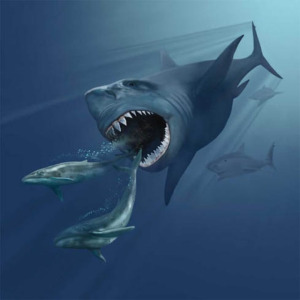About SSFP
About Us
Student Application
Subscribe to Our Newsletter
SSFP in the News
Members of Our Publishers Circle

Megalodons, an extinct species of mackerel shark, were the ocean’s biggest predator for millions of years. The appearance of great white sharks brought competition to the megalodons. It is a popular theory that great whites were the reason for the megalodon's extinction.
To know what megalodons ate, researchers looked for zinc in the sharks’ teeth. There are two types of zinc, or isotopes, zinc-66 and zinc-64. The isotopes on the teeth are used to understand what kind of food these creatures ate. Animals that have a diet of plants have more zinc-66 than carnivores, who have more zinc-64. Both these shark species evolved to have higher levels of zinc-64. The great white shark and the megalodon had the same diet, consisting of marine mammals, such as seals and whales.
The megalodon was the largest carnivore to ever exist and it grew to be 46 feet long. The megalodon probably went extinct from the changing ocean and a large drop in marine mammal population. The reason why and when they went extinct has not been fully answered. The species is believed to have gone extinct either about 2.6 million years ago or 3.5 million years ago, at the time great white sharks appeared. Competition with the great whites was suddenly fatal, but possibly not the only reason why megalodons disappeared. Continued research is being done to better understand the history of the megalodon and its eventual extinction.
[Source: Science News Explores]
Loading Comments...